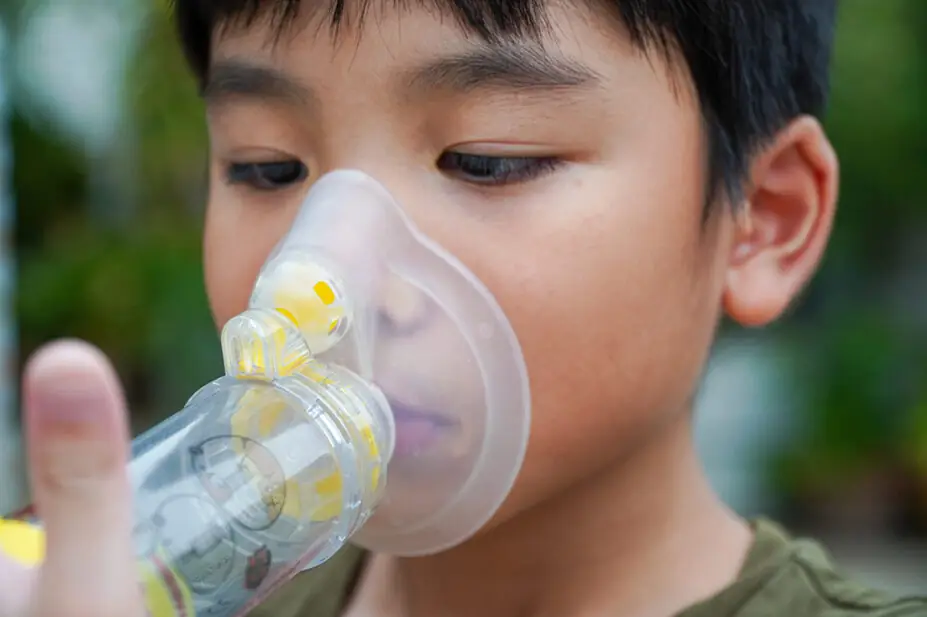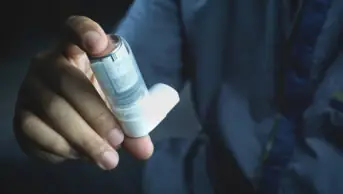
Shutterstock.com
Combined inhaler therapy reduces asthma attacks in children by almost half, study results have revealed.
Publishing their findings in The Lancet on 27 September 2025, researchers compared combination inhaled corticosteroid–formoterol reliever monotherapy with short-acting β2-agonist (SABA) reliever monotherapy, in children aged between 5 and 15 years.
Researchers analysed data from 179 children taking budesonide–formoterol compared with 181 taking salbutamol monotherapy.
The annualised rate of asthma attacks observed in the study was lower in the budesonide–formoterol group than in the salbutamol group, with cluster-adjusted rates of 0.23 in the budesonide–formoterol group compared with 0.41 in the control group.
The research also showed that adverse event rates were similar across the two groups, as 162 (91%) of participants in the budesonide–formoterol group experienced at least one adverse event, while 167 (92%) participants experienced at least one adverse event in the salbutamol group.
The year-long ‘Children’s Anti-inflammatory Reliever’ (CARE) study was led by the Medical Research Institute of New Zealand in collaboration with Imperial College London and several institutions in New Zealand.
Combination therapy is already recommended for use in adults with asthma in the UK, following National Institute for Health and Care Excellence (NICE) guidelines published in November 2024.
While low-dose inhaled corticosteroid/formoterol combination inhalers are recommended for use in patients aged 12 years and older, NICE still recommends SABA monotherapy for younger children.
On 28 September 2025, Samantha Rey, a reporter for Imperial College London, said: “For every 100 children with mild asthma who are switched from salbutamol to a 2-in-1 budesonide-formoterol inhaler, there would be 18 fewer asthma attacks per year.
“Importantly, the study also confirmed the safety of the combined-inhaler approach, with no significant differences in children’s growth, lung function or asthma control between the two groups.”
Study co-author Andrew Bush, professor in paediatrics and paediatric respirology at the National Heart and Lung Institute and consultant paediatric chest physician at the Royal Brompton Harefield NHS Foundation Trust, said: “Having an asthma attack can be very scary for children and their parents. I’m so pleased that we’ve been able to prove that an inhaler that significantly reduces attacks — already a game-changer for adults — is safe for children with mild asthma too.
“We believe this will transform asthma care worldwide and are excited to be building on this work with the CARE UK study.”
Darush Attar-Zadeh, clinical fellow respiratory pharmacist and executive chair of the Primary Care Respiratory Society, said: “I’m happy to see this study as we can’t assume whatever is safe and effective in adults is going to be safe in children.
“We’ve known for many years that asthma is a condition of inflammation and needs to be treated with an anti-inflammatory inhaler, so it doesn’t come as any real surprise that asthma attacks are reduced by 45%. The Medicines and Healthcare products Regulatory have also signalled warnings about the consequences of using a SABA alone.”
“Studies like this may help shape future guidance for the 5-11 [years] age group to treat children and young people with budesonide and formoterol earlier on in the pathway, rather than the conventional separate preventer and reliever inhaler, which we know can pose a risk if the person uses the SABA alone,” he added.


